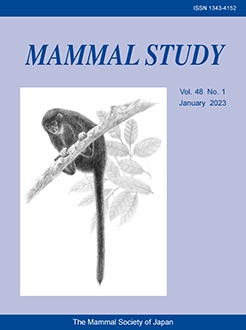The sequence variation of the mtDNA control region (CR) was analyzed for the two sibling species of Myodes (the gray-sided vole M. rufocanus and the dark red-backed vole M. rex) in Hokkaido mainland and its adjacent islands of Japan. The evolutionary rate of the CR was estimated using the island–island connections during the Quaternary. The 737–741-bp were determined for 1196 individuals of M. rufocanus from 65 localities and 315 individuals of M. rex from 26 localities. The CR was highly variable in both species: 330 and 79 haplotypes were identified for M. rufocanus and M. rex, respectively. The genetic distances were estimated for six island population pairs of M. rufocanus and two pairs of M. rex. The genetic distances log-linearly increased with an increase in the separation time. Although the evolutionary rates (substitutions/site/Myr) varied around 10 000 years ago, they became less variable further back in time. The representative evolutionary rate was estimated at 0.196/Myr with 0.139–0.254 (95% CI) for M. rufocanus 40 000 years ago and 0.101/Myr with 0.068–0.134 (95% CI) for M. rex 120 000 years ago. These estimates open opportunities for comparative studies on the evolutionary history of the sibling species.
How to translate text using browser tools
31 January 2023
Estimation of Evolutionary Rates for Mitochondrial Control Region in Sibling Species of Myodes (Rodentia) by Calibrations Based on Island Formation
Takashi Saitoh,
Shota Murakami,
Anna Pauline O. de Guia,
Naoki Ohnishi,
Kuniko Kawai
ACCESS THE FULL ARTICLE

Mammal Study
Vol. 48 • No. 1
January 2023
Vol. 48 • No. 1
January 2023
control region
dark red-backed vole
evolutionary rate
gray-sided vole
mtDNA




